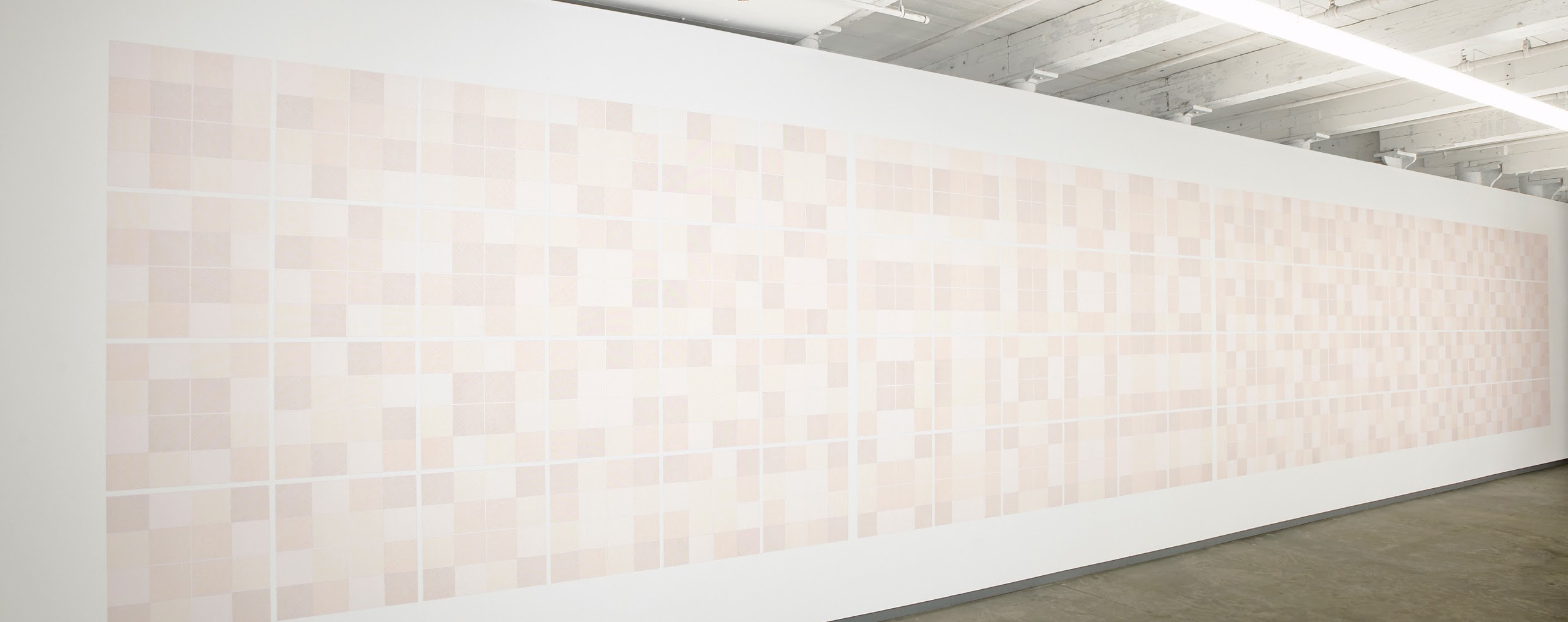Sol LeWitt
- Sol LeWitt
Drawing Series Part I-IV, #1-24, A B. (192 drawings).
August 2006
Colored pencil
Courtesy of the Estate of Sol LeWitt
First Installation
Dia:Beacon, Beacon, New York
First Drawn By
Lacey Fekishazy, Mary Gagne, Nick Kozak, Roland Lusk, Tanya Merrill, Darin Roberts, Anthony Sansotta
MASS MoCA Building 7
Ground Floor
Between 1969 and 1970 Sol LeWitt created four Drawings Series, which presented different combinations of the basic elements that governed many of his early wall drawings. In each series he applied a different system of change to each of twenty-four possible combinations of a square divided into four equal parts, each containing one of the four basic types of lines LeWitt used (vertical, horizontal, diagonal left, and diagonal right). The result is four possible permutations for each of the twenty-four original units. The system used in Drawings Series I is what LeWitt termed Rotation; Drawings Series II uses a system termed Mirror; Drawings Series III uses Cross & Reverse Mirror; and Drawings Series IV uses Cross Reverse.
Wall Drawing 1211 features all four of the drawing series in two iterations one of which is simple and one of which directs the draftsmen to superimpose, or layer, the lines. Each iteration presents a grid of twenty-four sets of four squares, each divided into four equal parts. The resulting effect is that of four different patterns of colored squares on each wall. Also shown is a diagram that illustrates the entire wall drawing using the numbers 1-4 to signify the four different line directions. The diagram serves as an aid to help visitors decipher the drawings structure.
Wall Drawing 1211 highlights LeWitt’s interest in seriality. The artist attributes this interest largely to the photographer Edward Muybridge, whose serial views of subjects in motion represent an objective approach to composition and narrative, which greatly inspired LeWitt.
Backstory
In Wall Drawing 1211 all the vertical lines are drawn in graphite, all the horizontal lines are drawn in yellow colored pencil, all the diagonal lower left to upper right lines are drawn in red colored pencil, and all the diagonal lower right to upper left lines are drawn in blue colored pencil. Today these designations are set. However, in many of LeWitt’s earliest wall drawings, the designation between colors and lines was much more arbitrary. For example, in Wall Drawing 85, the vertical lines are drawn in yellow and the horizontal lines are drawn in graphite.


